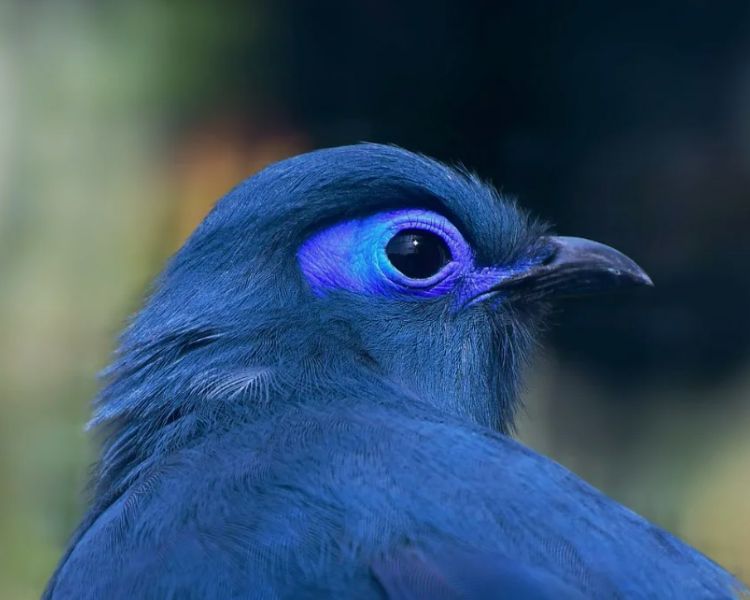
Introducing the Blue Coua, a striking bird with a bold, blue plumage covering its large body. Its wings and tail shine with a hint of violet, while a short crest adorns its head. The area around its eyes is framed by vibrant cobalt-blue to violet skin, adding to its unique appearance. Its bill is a stark black, and its eyes vary in shades from brown to reddish-brown. Blackish tones can be found on its legs and feet, completing the distinct look of this tree-dwelling bird that is known for its agile movements and occasional impressive gliding flights.
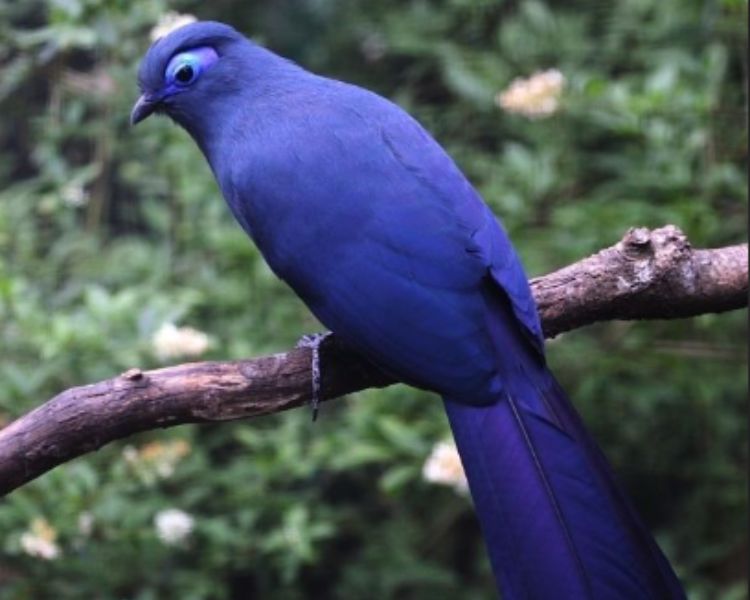
The photo titled “Blue Coua at Weltvogelpark Walsrode 2013-02” by Olaf Oliviero Riemer shows a Blue Coua, also known as the Blauer Seidenkuckuck, a bird species where both males and females look alike. However, young Blue Couas have dark black feathers on their back, rump, and lower belly, with wings that are a less vibrant shade of blue compared to adults. Another distinguishing feature is that juveniles have feathers around their eyes, unlike the bare skin seen in adult Blue Couas.
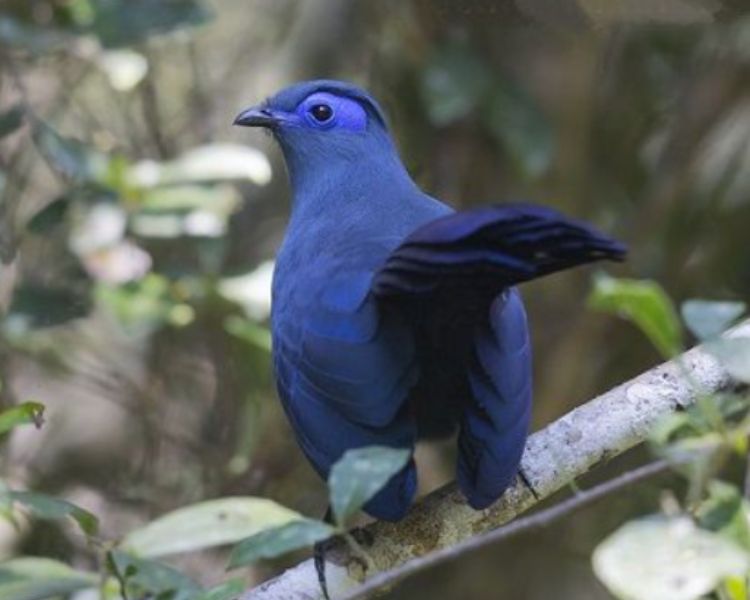
In the wild and picturesque lands of Madagascar, you’ll find the unique and beautiful Blue Coua. This bird is native to the island, specifically seen in the eastern and northwestern parts. It can be spotted in various habitats such as primary rainforests, secondary growth, deciduous forests, and even mangroves. While it does enjoy plantations like clove and cacao, it tends to steer clear of dry forests. The Blue Coua can be found at different elevations, from sea level up to 1,800 meters, though it is most commonly seen below 1,200 meters in southeastern Madagascar.
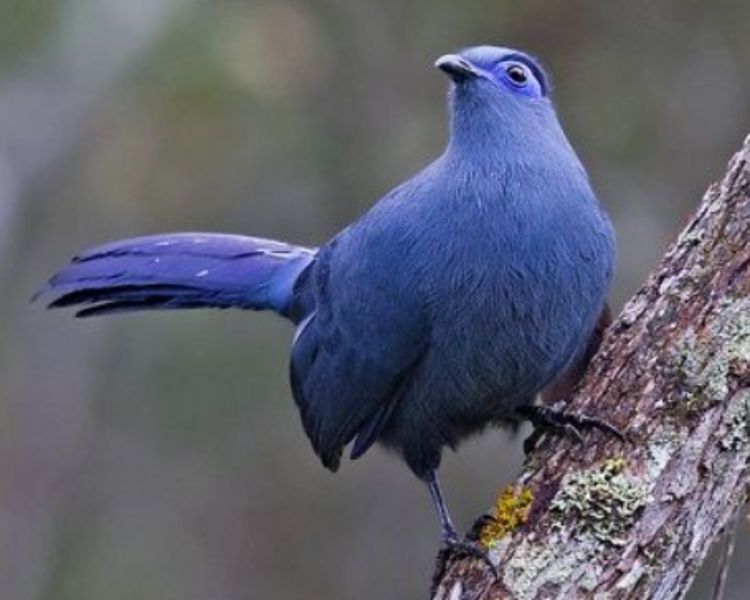
“Blue Coua (Coua caerulea) at the World Bird Park in Walsrode in January 2013” was taken by Olaf Oliviero Riemer and is licensed under CC BY-SA 3.0. The diet of the Blue Coua includes a variety of insects, chameleons, crabs, frogs, fruits, and flowers. This bird is known for its arboreal nature, actively searching for food from the treetops down to the undergrowth, with a preference for the midstorey. It is often spotted alone or in pairs, with small family groups forming post-breeding season. Male Blue Couas engage in courtship feeding as part of their courtship displays, a behavior commonly seen in birds of the Cuculidae family. “Blue Coua (Coua caerulea) at the World Bird Park in Walsrode in March 2013” was captured by Olaf Oliviero Riemer and is licensed under CC BY-SA 3.0. Breeding for the Blue Coua typically occurs between July and December, coinciding with the rainy season. They construct their nests using sticks and usually position them in thick foliage at heights ranging between 3.5 and 10 meters above the ground. A female Blue Coua typically lays a single white egg, and both parents take part in incubating the egg as well as feeding and caring for the chick. While specific details regarding the duration of incubation and nestling periods are limited, the Blue Coua’s breeding habits are known to be active during certain times of the year.
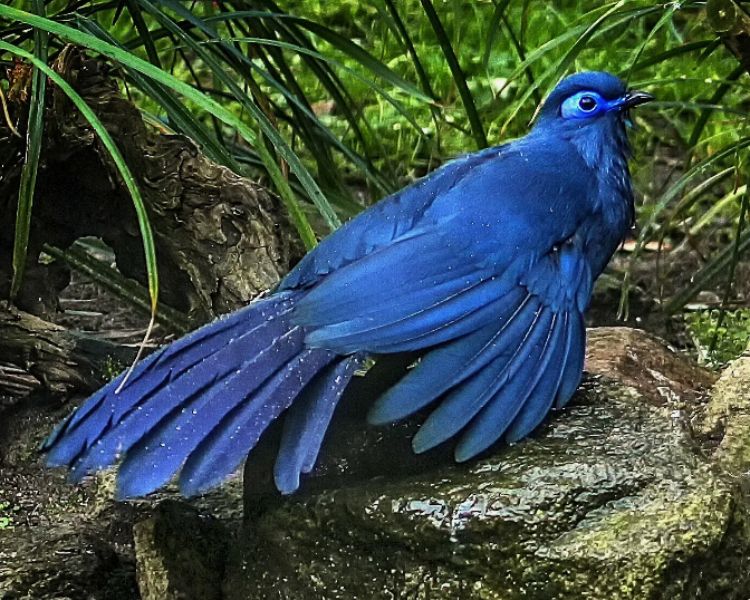
“Known as the Blue Coua, this species can be found in its suitable habitats, but it is at risk due to hunting for food and habitat destruction by local communities. While facing these challenges, the Blue Coua is not currently considered globally threatened.” Check out the captivating sound of this bird in the following link: [YouTube Link: https://youtube.com/watch?v=AVkbDEYFdNw%3Ffeature%3Doembed]


